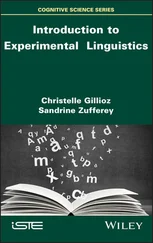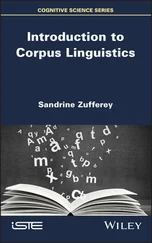question operator 302–3, 324
polysemy 232
questions
polysyllabic words 41, 81
in Child English 352, 353–4
polysynthetic languages 160–1
in CSE 316
possessives
in EME 316
in AAVE 237
formation of 133
poverty of the stimulus argument 8
in German 323–4
pragmatics 245, 246, 388–400
interpretation as 300–2
predicate 247
wh-in-situ 297
prefix 106, 140
yes-no 302–3, 323–4
prepositional phrase (PP) 262, 263, 315, 331
in Child English 350
ranking of constraints 90–1
prepositions 131, 144, 334
rapidity of first language acquisition 6
in language acquisition 187
‘r’-colouring 39
present participle 136
reactivation of copies 370
presupposition 392–4
realisation of morphological processes 152
and information structure 391, 394
Received Pronunciation (RP) 36, 69
logical 393
recency effects in psycholinguistics 369
pragmatic 393–4
recipient 379
prevocalic voicing 99
recursion
primed context in lexical decision tasks 203
in compounds 148
priming experiments 202
in sentence structure 260
Principle of Compositionality 330–2, 337, 338
redundancy in feature specifications 85, 87
Principles and Parameters Theory (PPT) 325, 345, reduplication 163
349–50, 354
reflexives 277–8
Index
431
register 226
social nature of language 1
regularity of sound change 67–8
social network links 51, 237
Relation, Maxim of 396, 398
sociolinguistics 14–16
Relevance Theory 398–400, 402, 409
sociological variables 47–52
resonance 28
soft palate (see velum)
retroflex 33, 35
sonorant as phonological feature 412
rhetoric 395
sonorants 34, 79
rhyme (rime) 79
sonority 80
in poetry 118
sonority principle 80–1
Rips, L. 210
sound change 56–8, 61–72
Rizzi, L. 280, 352–3
sound source 28
Roberts, I. 302
Source 334
Romance 151
South African English 68
root 140, 145
Spanish 83, 151, 160, 389
Rosch, E. 196
species-specificity of the language faculty 8–9
rounded as phonological feature 413
Specific Language Impairment (SLI) 13–14, 213, rounding 36, 39–40
219–21, 377, 383–5, 408
rule deficit hypothesis in SLI 219–20
dissociations in 219–20
Russell, B. 338
therapy for 383, 384, 385
Russian 38, 160, 214, 215, 224, 381
word order and 383–5
specifier 262, 281, 297, 299, 300, 315, 322, 323
Sacks, H. 398
specifier–head agreement 265, 353
Sag, I. 246
speech acts 38
Samoan 161
indirect 394–5
scan-copier model of speech production 116–17
speech perception 109–13
schwa vowel 36, 83
speech production 109, 113–17, 207–9
segments 41, 75
mechanisms of 28–41
in speech errors 114, 118–19
Sperber, D. 398, 402
in writing systems 118–19
spirantisation 62–3
selection 264, 266–8, 345
spoonerisms 114–15
selectional properties of auxiliaries 267
spreading 101
selective impairment of brain function 11, 216
stable sociolinguistic variables 16
Sells, P. 311
stable variation 234–5
semantic broadening 230
standard languages 15
semantic change 228–33
stem 145, 147
semantic component of a grammar 345, 407
stem-based inflection 160, 215, 216
semantic comprehension 200, 408
stopping in child phonology 99
semantic narrowing 231
stops 86
semantic similarity
stories 245
rating of 210
Stray Deletion (Stray Erasure) 105
in Wernicke’s aphasia 218–19
stress 5, 41–2
semantics in acquisition 192–6
in language change 70–1
sentence comprehension 366–74
and phonological alternations 83
sentence–picture matching task 379–80
phrasal 42
sentence processing
secondary 42
strategies of 370–4
word 42
sentences (v. utterances v. propositions) 389
in word recognition 200
Senufo 81
strident as phonological feature 412
Separation Hypothesis 153, 156, 165
structural ambiguity
Serbo-Croatian 43
in compounds 149
serial-autonomous processing models 199–204
in sentence processing 370–3
Shakespearian English (see Early Modern English)
in sentences 331–2
short-term memory 366, 369, 373–4
structural continuity in language acquisition 354,
short vowels 36–7
357, 361
Sign Languages 25
structural learning
social class and language use 48
as parameter setting 349
social contact and morphological variation 237
stylistic variation 53–4
432
Index
subject 130, 137, 247–9, 262
tense phrase (TP) 259–60, 261–2, 264
empty (see pro and PRO)
incomplete (T’) 262, 264
in passives 305–6
tense vowels 38, 77
subject-centred languages 392
texts 245
subordinate level of categorisation 194–6
thematic (θ-) roles 333–5
in Wernicke’s aphasia 217–18
Theme 334, 379
substitutions in speech errors 115, 207, 208
third person singular present morpheme
suffix 140
in acquisition 189–90
Suffolk 228
allomorphy in 220
suggestions 394
in SLI 220
Sumerian cuneiform 119
tone 42–3
superordinate 172, 208
tone languages 43
superordinate level of categorisation 194–6
Tongan 161
in Wernicke’s aphasia 217–18
tongue twisters 114
suppletion
topic (v. comment) 249, 281, 322, 389–92
partial 152
topicalisation 306
total 152
topic-centred languages 392
suprasegmental change 70–2
topic–comment articulation 391
suprasegmental level 41
trace of movement (see copy)
suprasegmentals 41–4
transition problem in historical linguistics 61,
surface representation (surface form) 84–5, 86–90
67–70
in child phonology 102, 106
transition relevant places 401
Swahili 160
Travis, L. 318
syllabification 81–2
tree structures in sentence comprehension 366
syllables 41, 78–82
Trudgill, P. 49, 235
in child phonology 99
truncation 352–3, 361
in poetry 118
truth conditions 336–9, 344, 388
in speech errors 115, 116–17
T Strength Parameter 317, 349
in writing systems 119
T-to-C movement 295, 313, 316
syllable templates in child phonology 104–5
in AAVE 312
synchronic method in historical linguistics (see also
in German 322–3
apparent-time method) 16
Turkish 99–100, 156–7, 157–8, 224, 391
syncretism 159
turn-taking in conversation 400–2
synonymy 174–5, 209
syntactic component of a grammar 4, 407
umlaut 164
syntactic disorders 377
underlying representations 83–5, 86–90
and language comprehension 377
in child phonology 101, 102, 106, 140
and language production 377
underspecification
syntactic illusions 374
of functional categories in agrammatism
syntactic parameters 314–24
380–2
syntactic variation 311–20, 409
of functional categories in Child
English 361
tableaux in Optimality Theory 91
of phonological features 87
Tagalog 162–3
uniformity in first language acquisition 6
tag questions 273–4
Uniformity Principle 280–1
tap 34
Universal Grammar (UG) 6, 87, 90, 232, 287, 311,
Читать дальше
![Andrew Radford Linguistics An Introduction [Second Edition] обложка книги](/books/397851/andrew-radford-linguistics-an-introduction-second-cover.webp)











